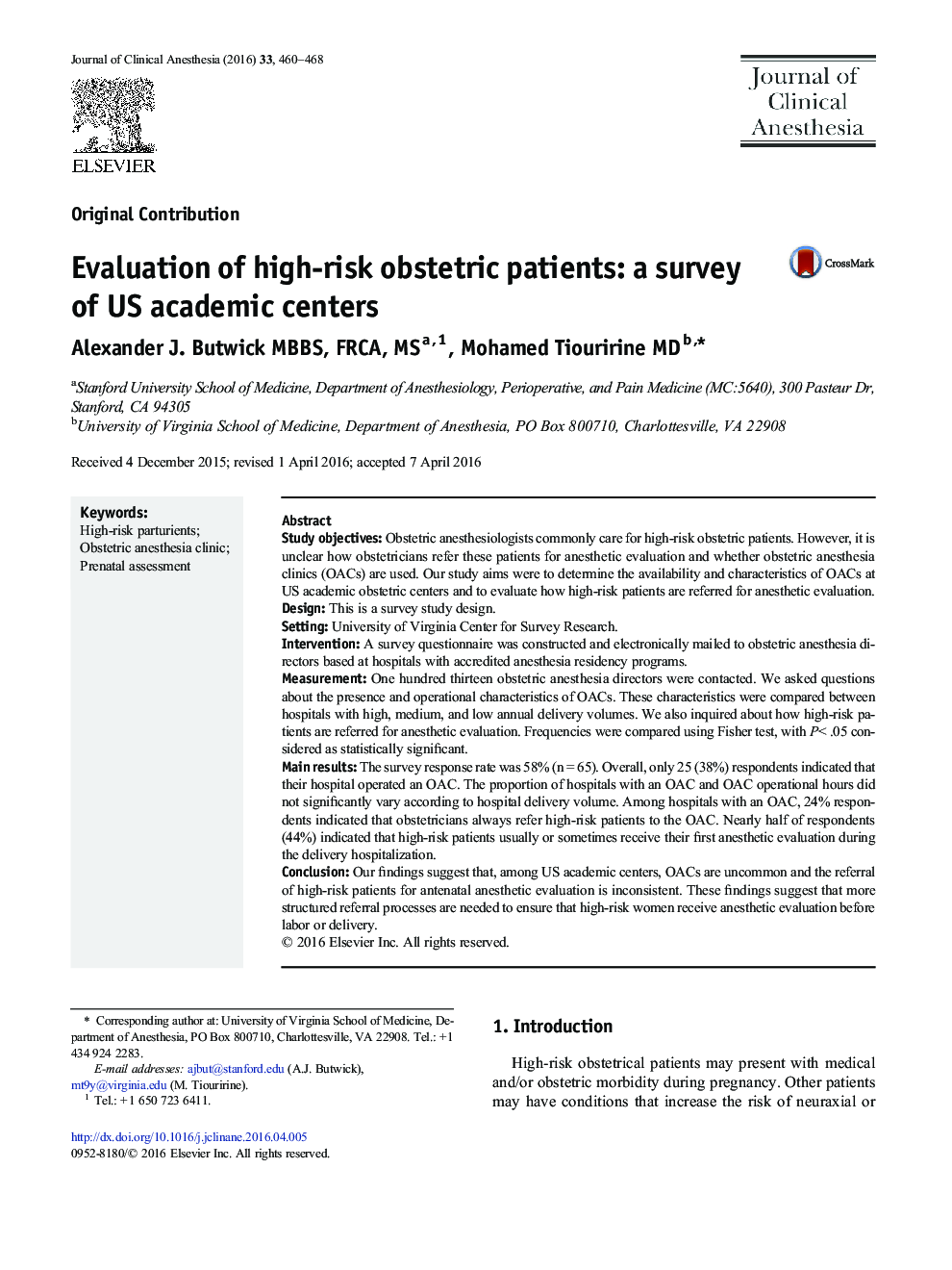| Article ID | Journal | Published Year | Pages | File Type |
|---|---|---|---|---|
| 2762134 | Journal of Clinical Anesthesia | 2016 | 9 Pages |
•This survey evaluates availability of obstetric anesthesia clinics at US academic centers.•This survey assesses antenatal referral processes of high-risk obstetric patients.•The proportion of academic centers with a formal obstetric anesthesia clinic is relatively low.•Obstetric referral of high-risk obstetric patients for antenatal anesthetic evaluation is inconsistent.
Study objectivesObstetric anesthesiologists commonly care for high-risk obstetric patients. However, it is unclear how obstetricians refer these patients for anesthetic evaluation and whether obstetric anesthesia clinics (OACs) are used. Our study aims were to determine the availability and characteristics of OACs at US academic obstetric centers and to evaluate how high-risk patients are referred for anesthetic evaluation.DesignThis is a survey study design.SettingUniversity of Virginia Center for Survey Research.InterventionA survey questionnaire was constructed and electronically mailed to obstetric anesthesia directors based at hospitals with accredited anesthesia residency programs.MeasurementOne hundred thirteen obstetric anesthesia directors were contacted. We asked questions about the presence and operational characteristics of OACs. These characteristics were compared between hospitals with high, medium, and low annual delivery volumes. We also inquired about how high-risk patients are referred for anesthetic evaluation. Frequencies were compared using Fisher test, with P< .05 considered as statistically significant.Main resultsThe survey response rate was 58% (n = 65). Overall, only 25 (38%) respondents indicated that their hospital operated an OAC. The proportion of hospitals with an OAC and OAC operational hours did not significantly vary according to hospital delivery volume. Among hospitals with an OAC, 24% respondents indicated that obstetricians always refer high-risk patients to the OAC. Nearly half of respondents (44%) indicated that high-risk patients usually or sometimes receive their first anesthetic evaluation during the delivery hospitalization.ConclusionOur findings suggest that, among US academic centers, OACs are uncommon and the referral of high-risk patients for antenatal anesthetic evaluation is inconsistent. These findings suggest that more structured referral processes are needed to ensure that high-risk women receive anesthetic evaluation before labor or delivery.
